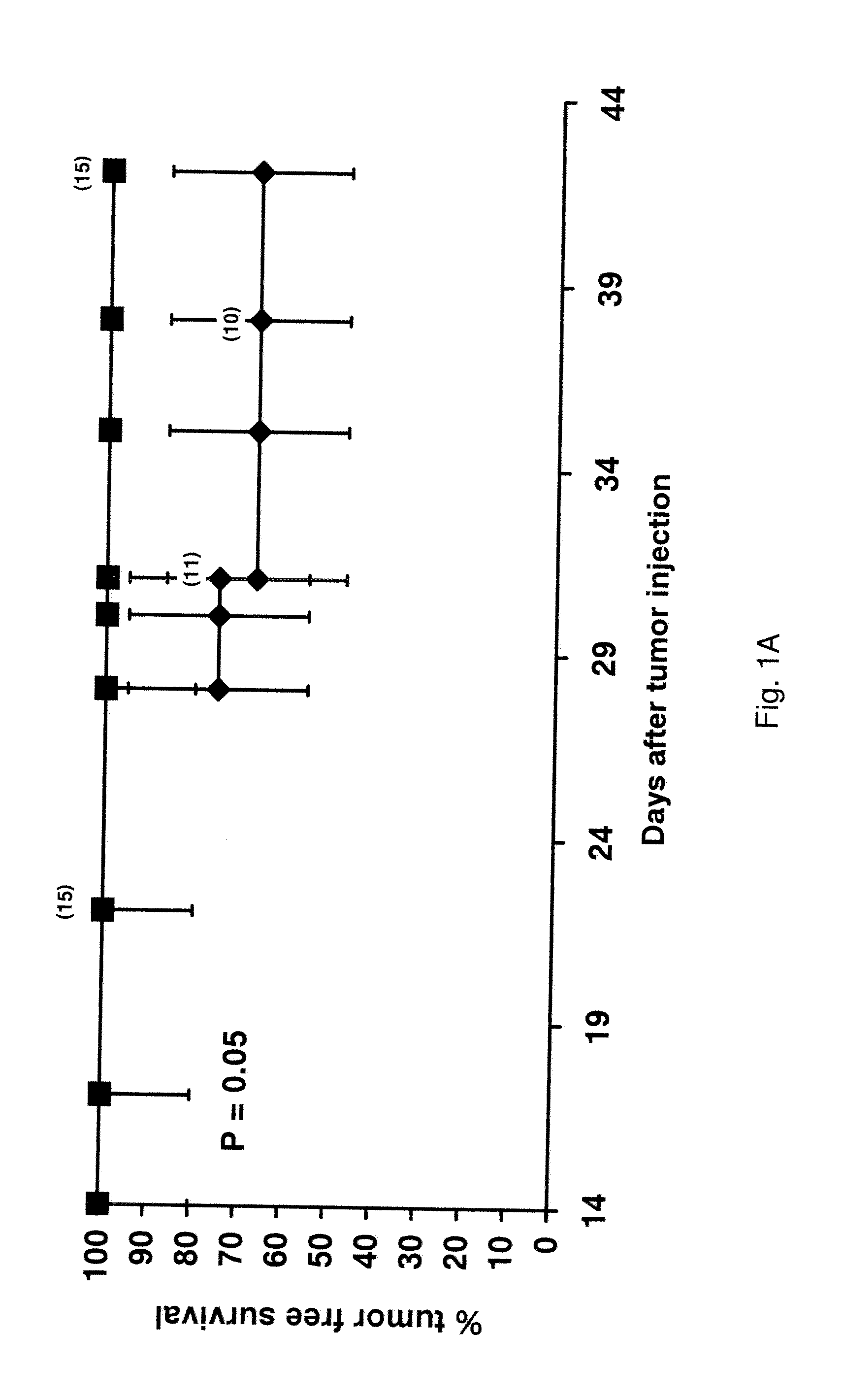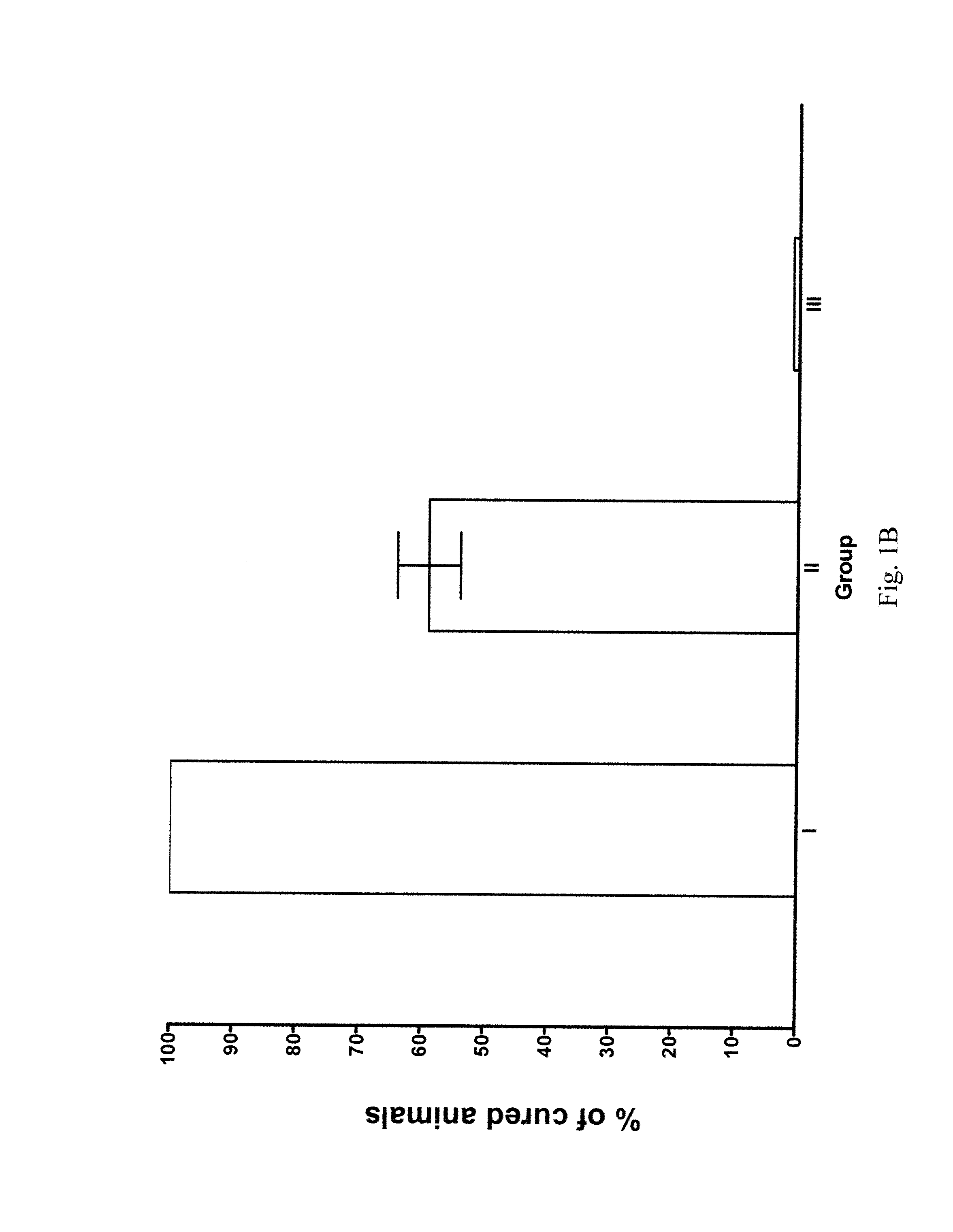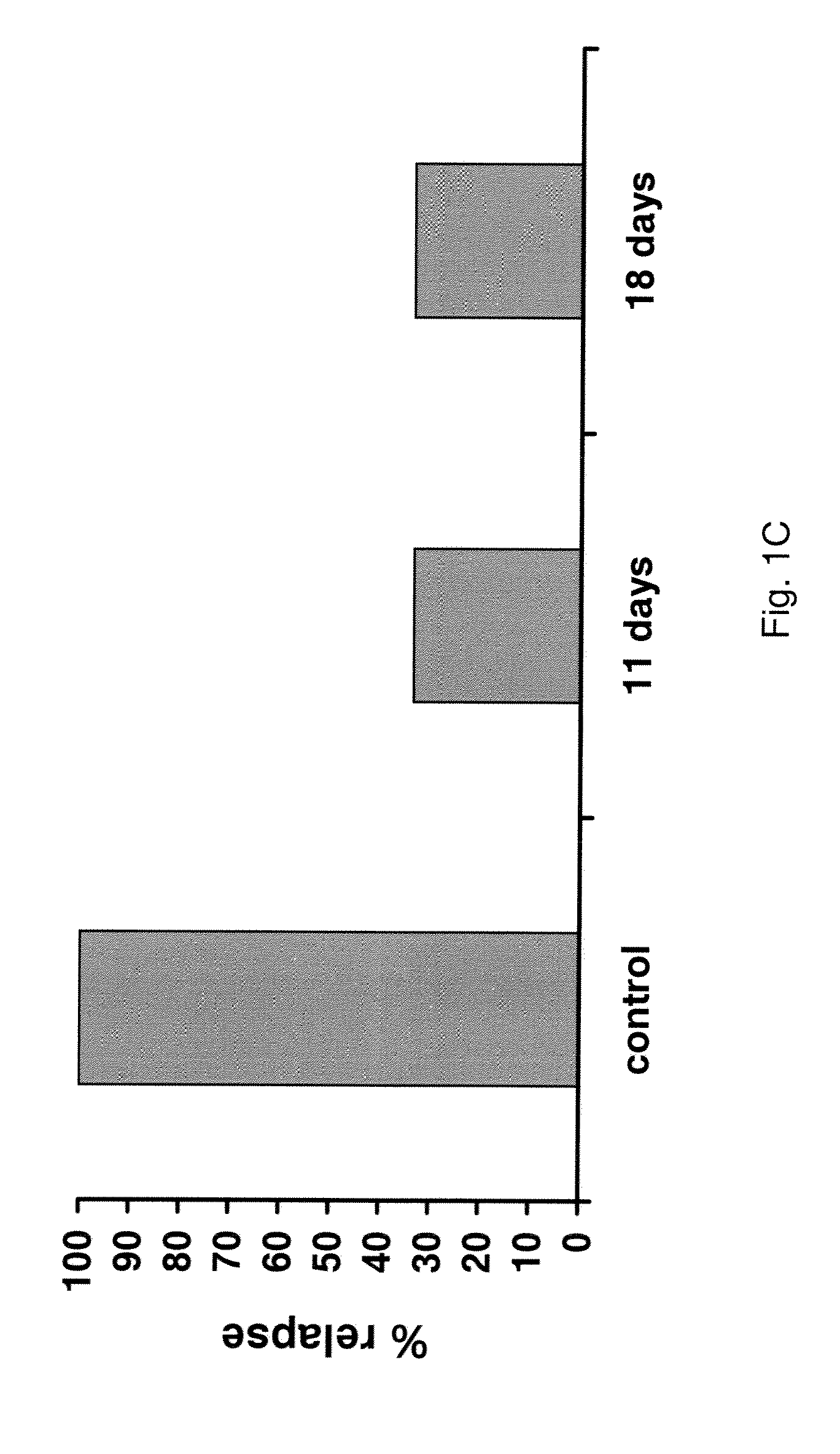Combinations of receptor tyrosine kinase inhibitor with an a1-acidic glycoprotein binding compound
a technology of receptor tyrosine kinase and glycoprotein, which is applied in the direction of drug composition, extracellular fluid disorder, biocide, etc., can solve the problems of relapsed animals not responding to further treatment, no animal was cured,
- Summary
- Abstract
- Description
- Claims
- Application Information
AI Technical Summary
Benefits of technology
Problems solved by technology
Method used
Image
Examples
example 1
STI571 Efficacy is Related to the Initial Tumor Load
[0139]Nude mice are injected s.c. with 50 millions KU812 cells. Treatment is initiated after 1, 8 and 15 days respectively (groups I to III), in the presence of approximately, 50, 300 millions and 1 billion leukemic cells. Although tumor regression is observed in all groups, cures are obtained only in the first two groups. FIG. 1A shows the results of a representative experiment. While all animals in group I are reproducibly cured, mice in group II develop between 33% and 40% relapses; no cure is ever observed in group III. Relapses usually develop 1 to 3 weeks after treatment discontinuation. FIG. 1B presents the combined results from 3 different experiments. A clear relationship between the amount of tumor present at the beginning of treatment and the outcome of the therapy is evident. A possible explanation for these results could reside in the insufficient length of STI571 administration in group II and III. To test this hypoth...
example 2
Relapsed Tumors Show In Vivo Resistance but Retain In Vitro Sensitivity to STI571
[0140]Animals presenting recurrent tumors are retreated with the same STI571 schedule (11 day regimen). Treatment starts as soon as tumors become again measurable. FIG. 2 shows one representative experiment. It is evident that relapsed tumors respond poorly to the new treatment, and eventually start to grow similarly to tumors in untreated animals (dashed lines). Although leukemic cells are resistant in vivo to STI571, their intrinsic sensitivity to STI571 is not known. To investigate this issue, tumors are excised from resistant animals, cell suspensions are obtained and cells are placed in culture and tested for in vitro sensitivity to STI571 within 24-48 hours, as previously described (le Coutre P, et al., J. Natl. Cancer Inst. 91, 163-168, 1999). FIG. 3 presents the results obtained from two such tumors. It is evident that the leukemic cells obtained from resistant animals retain their sensitivity t...
example 3
STI571 Plasma Levels in Relapsed Mice
[0141]A possible explanation for the above reported results could reside in an increased metabolism of STI571 in pretreated animals, with resulting lower STI571 plasma levels. To investigate this issue, tumor bearing mice, either pretreated with STI571 or not (controls), are killed at 0.5, 2.0 and 5.0 hours after an acute treatment with STI571 and the plasma STI571 total concentrations determined by HPLC. The results are presented in FIG. 5. While control and pre-treated animals reach similar plasma levels at 30′, STI571 levels decrease more quickly in control animals, compared with pretreated mice (p<0.01). Intra tumor concentrations show an opposite pattern, tumors present in pretreated animals contain lower STI571 concentrations at all time points, this phenomenon reaching statistical significance at the 5 hour time point. These results do not confirm our hypothesis, and even show that resistant animals maintain higher STI571 concentrations in...
PUM
| Property | Measurement | Unit |
|---|---|---|
| weight | aaaaa | aaaaa |
| weight | aaaaa | aaaaa |
| weight | aaaaa | aaaaa |
Abstract
Description
Claims
Application Information
 Login to View More
Login to View More - R&D
- Intellectual Property
- Life Sciences
- Materials
- Tech Scout
- Unparalleled Data Quality
- Higher Quality Content
- 60% Fewer Hallucinations
Browse by: Latest US Patents, China's latest patents, Technical Efficacy Thesaurus, Application Domain, Technology Topic, Popular Technical Reports.
© 2025 PatSnap. All rights reserved.Legal|Privacy policy|Modern Slavery Act Transparency Statement|Sitemap|About US| Contact US: help@patsnap.com



